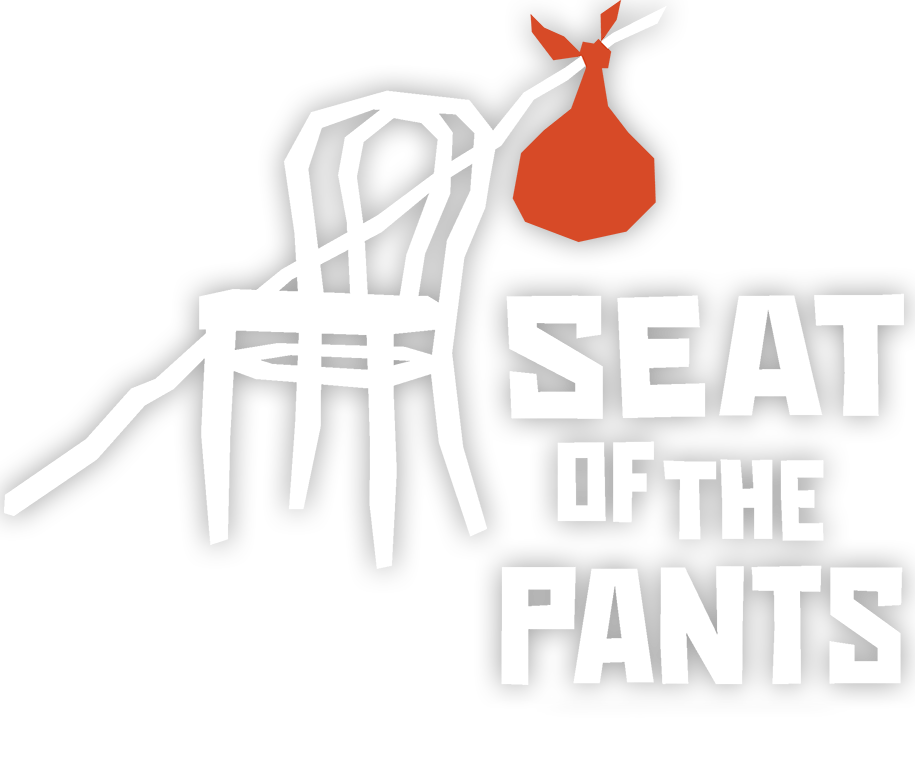PROCESS QUICK & DIRTY, A SPYBACK
I’m coming off a high from being in rehearsal and having had a great workshop this week, so I’m going to take this opportunity for a spyback. (For a reminder of what a Spyback is, checkout this earlier post.)
In a candid acknowledgement, I want to say that I know not everyone is pining for more process in their art-making, and that’s great. SOTP doesn’t lay claim that everyone NEEDS to bow down before the process-heavy methodologies of historic acting teachers in order to make good art. Heck no! Process, methods, tools, etc. are there to help just as much as an actor’s intuition and natural skill. Use what helps. Use what inspires. Use what fuels you.
For us - we dig learning and pushing ourselves into new stuff - we think it’s helping us make better art.
Every once in a while I will hear from someone who is new to SOTP say something along the lines of, “Gosh, I just don’t think I could spend that much time on a play.” I get tongue-tied with all the things I want to tell them about how that time gets spent and how little of it is focused on just doing a play. Instead we endeavor toward a rapid-paced, crash course in a slew of other things and spend time on ourselves as artists and collaborators, priming the pumps before getting to work.
Sometimes I think there is a misconception about what “process” means. I think people may confuse process with the notion that a single tool or a single concept of a technical method is explored ad nauseam and even ventures down a regrettable path of never ending navel-gazing. Fortunately for us all, that couldn’t be further from our experiences at SOTP.
The Last Six Weeks
When we extend our rehearsal process by an additional 6(ish) weeks for process, we cram as many new tools and explorations as we can into that time - quickly downloading a cogent and graspable amount of a new method before jumping into the next. Frankly, we know not every tool is going to work for everyone - and that’s great; and it’s super helpful to know as an ensemble before we dive into rehearsals five days a week. During these first eight rehearsals (roughly 2.5-4 hours each) spread over six weeks, we’ve dabbled into the following tools: Play Through, Interrogations and Observations, World of the Play media explorations, Atmosphere, Imaginary Body, The Palace, Laws of Composition (including the laws of Triplicity, Polarity, Climaxes, Composition of Characters, Rhythmical Repetitions), Rhythmical Wave, Action Analysis (including Internal, External Events, Seed, and Theme), Psychological Gesture, The Four Brothers, Qualities of Movement, Stanislavsky’s Given Circumstances, Cultural Competency Group Discussion, Staccato/Legato, Crossing the Threshold, a General Beauty Statement, and probably a few more things that I’m forgetting in this moment.
What surprises me most at this point in the process is how little we’ve actually worked on the play, but how intimately I feel connected to the play by knowing it’s in the background while we explore all of these various tools.
“And Another One”
It’s a mode we’ve tried to replicate in our workshops. Over the course of 2-3 hours, we try to impart a digestible meal’s worth of a method that participants can hopefully wolf down or at least stuff into a doggie bag for future work. This past Tuesday we did a Laban class introducing the Physical Efforts and the group embraced the exploration beautifully. While my former professors and facilitators of studios I used to attend in NYC may not be thrilled at the notion of trying to distill such a heaping dose of a method into just a few hours, I’ve come to cherish that it’s the way that creates accessibility to this community, and frankly, it’s engendering interest and playfulness that feels so appropriate for art-making.
A Big “Why?”
One notion that came up during this last workshop that I thought was a really great demonstration of why I love these physical acting methods was (and I’m paraphrasing): “How does emotion figure into this? If a character is sad or happy, where do you put that into the equation?”
What’s great about having tools like Laban, Michael Chekhov, Viewpoints, or any of the other tools and things SOTP squeezes into their process weeks is that you pretty much NEVER have to worry about emotion when acting. These methods all focus on DOING, and that if you can really commit your energy, your form, and your imagination into the ACTION of a moment or a line, that the emotions will come naturally. AND easier yet, they will be true and repeatable and not tied to any personal baggage of the actor. From the tools harnessed in a couple of quick and dirty explorative hours, the art/character/scene that you will have composed will be FULL, ACTIVE, EMOTIONALLY-STIMULATING, REAL, and NOT-TRIGGERING! It is such a relief, especially in tumultuous times, and when working on a play that has a slew of sensitive topics, that there is a quick and dirty means of keeping the “heavy” with the character and the world of the play and being able to leave that on the stage. It’s such a relief to not have to start a scene and be thinking, “Oh gosh, I really have to feel it this time so I can work up tears for this emotional breakdown!” That would be so torturous and stressful. Instead, we can just trust the tool. It’s a great time, it’s a break-neck pace, it’s a challenge, and most of all it is so much fun.
- Michael



